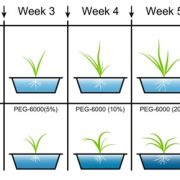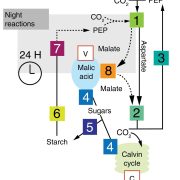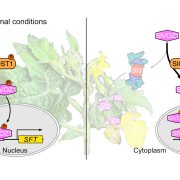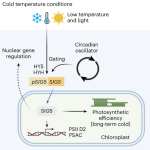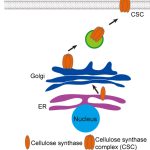Natural variation of maize root hydraulic architecture underlies highly diverse water uptake capacities
 Water uptake by roots is controlled by two factors: the architecture of the root system, and its hydraulic capacity. The later property is largely determined by the anatomical and physiological properties of the root cells, which include things like suberization and the presence of aquaporins (regulated water channels). Rishmawi et al. characterized multiple parameters on more than 200 hydroponically-grown inbred Zea mays lines. Many of the measured parameters varied by more than 10-fold among the lines, and some traits were shown to vary independently (e.g., surface area of primary root and seminal roots) or conversely dependently (e.g., seed size and number of seminal roots) with others. The initial survey revealed that a subset of lines captured the full diversity and that were selected for further study. Further studies will include analysis of these traits under stress conditions and identification of their genetic underpinnings. (Summary by Mary Williams @PlantTeaching) Plant Physiol. 10.1093/plphys/kiad213
Water uptake by roots is controlled by two factors: the architecture of the root system, and its hydraulic capacity. The later property is largely determined by the anatomical and physiological properties of the root cells, which include things like suberization and the presence of aquaporins (regulated water channels). Rishmawi et al. characterized multiple parameters on more than 200 hydroponically-grown inbred Zea mays lines. Many of the measured parameters varied by more than 10-fold among the lines, and some traits were shown to vary independently (e.g., surface area of primary root and seminal roots) or conversely dependently (e.g., seed size and number of seminal roots) with others. The initial survey revealed that a subset of lines captured the full diversity and that were selected for further study. Further studies will include analysis of these traits under stress conditions and identification of their genetic underpinnings. (Summary by Mary Williams @PlantTeaching) Plant Physiol. 10.1093/plphys/kiad213


